Feedback systems are basically about looping the output of a system back into its input. Sometimes, feedback can get a bit wild—think of the ear-splitting squeal when a mic is too close to a speaker? Yep, that’s feedback! In the synth world, feedback isn’t just a bug; it’s a feature, capable of turning plain sounds into complex, evolving audio landscapes. This article hopes to offer some insight into the inner workings of feedback, and how to use it to your benefit.
Make Your Output Safe
Add Attenuation
To avoid any chance of blowing your speakers or eardrums, it’s smart to route your final output through an attenuator or mixer. This lets you keep a handle on the volume, making sure you can mess around with feedback without any nasty surprises.
Remove DC Offset
DC offset occurs when a symmetric waveform shifts from its zero crossing point. For instance, a standard triangle wave should oscillate symmetrically from -5v to +5v. If DC offset is present, you might see this wave range from -1v to +9v. Suppose your VCA only handles audio amplitudes from -8v to +8v; in this scenario, the offset would cause the waveform to clip, altering its shape and sound characteristics. Minor DC offset might be inconsequential, but significant offset can distort your input and consume available headroom. Should your feedback amplitude start to increase uncontrollably, it might endanger your speakers or hearing.
Using a high-pass filter on your output set around 20Hz is an effective method to eliminate DC offset, preserving the integrity of the original waveform shape.
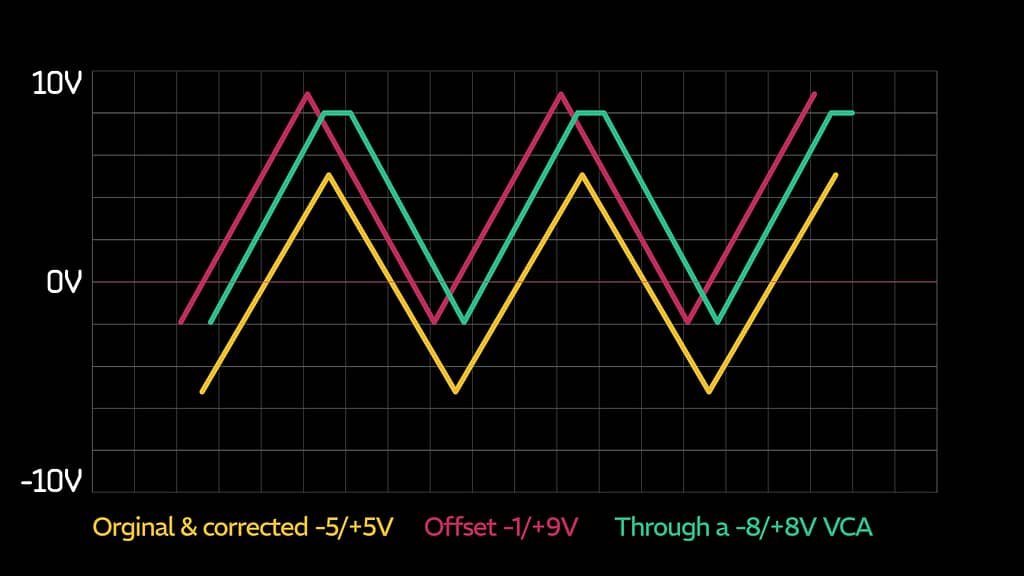
Dynamically Control the Amplitude
Sometimes you want to beef up the quieter parts of your feedback and dial back the louder bits. Although a compressor could achieve this, using a VCA coupled with an envelope follower tends to be more straightforward. This technique involves capturing the amplitude profile of your signal with an envelope follower, then inverting this envelope to modulate a VCA, which then adjusts the signal amplitude dynamically—lowering it when it’s loudest and raising it when it’s quietest.
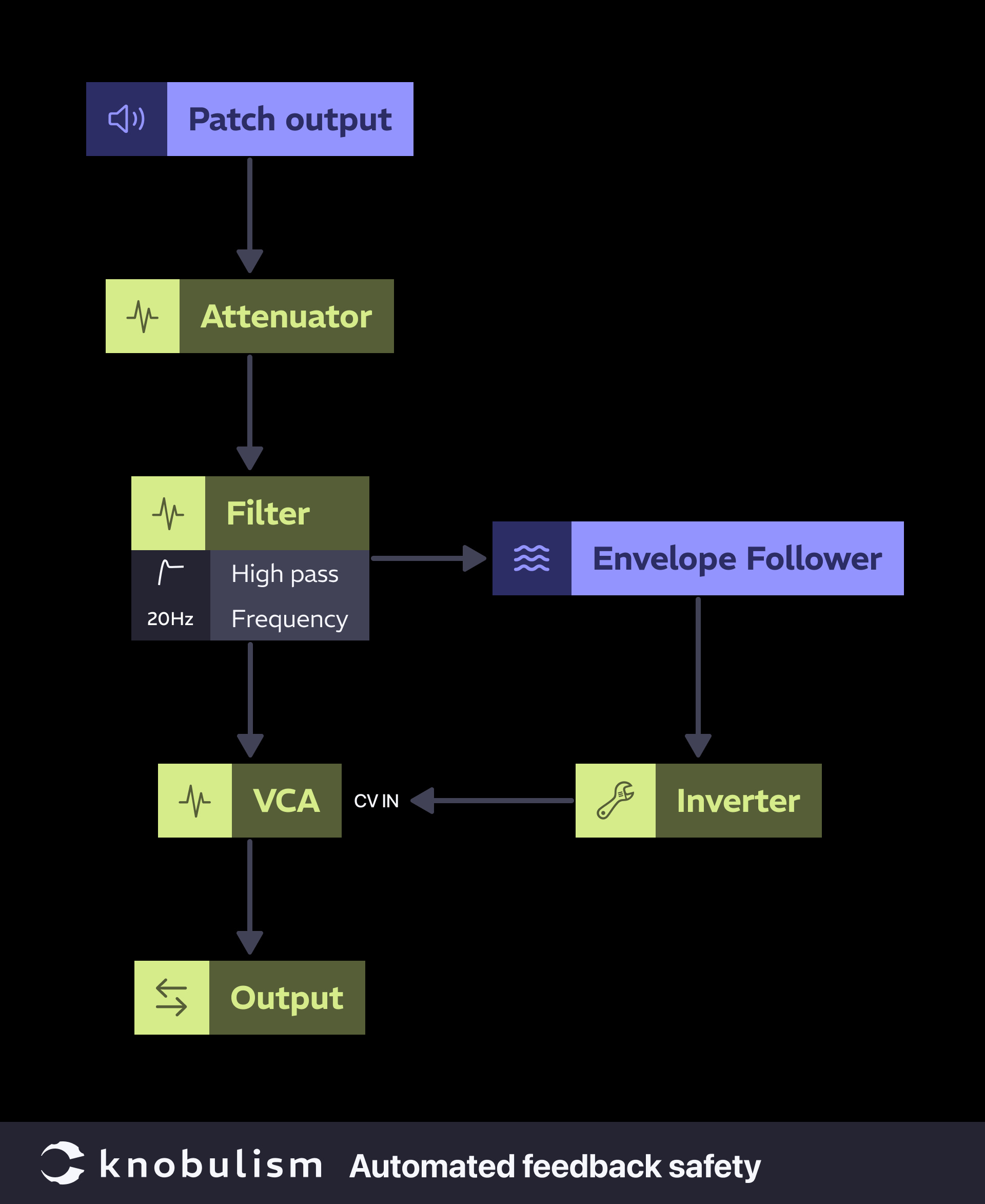
I’m not saying you should put this after every feedback patch, often an output level control is all you need. Though, if you want some serious control this is a great way to do it.
Feedback Patches
With basic safety measures in place, let’s explore some practical feedback patches.
Delay Feedback
A common starting point is using a delay module, which typically features a built-in feedback parameter. This parameter acts like a mixer with level control, blending the output signal back into the input at your desired intensity. Managing the feedback level is crucial as it can escalate quickly, perpetuating an infinite loop of sound re-entry. Begin by splitting your output with a mult, sending one channel to your final output and the other to a mixer. From there, route the mixer’s output back into the delay’s input. This setup forms your initial feedback loop. Even without a sound source at the input, the inherent noise in a modular system is usually sufficient to generate audio feedback when the mix is turned up fully. Experiment with this setup to experience a range of sounds, akin to the ambient noise of cicadas, and manipulate the time parameter to vary the feedback dynamics.
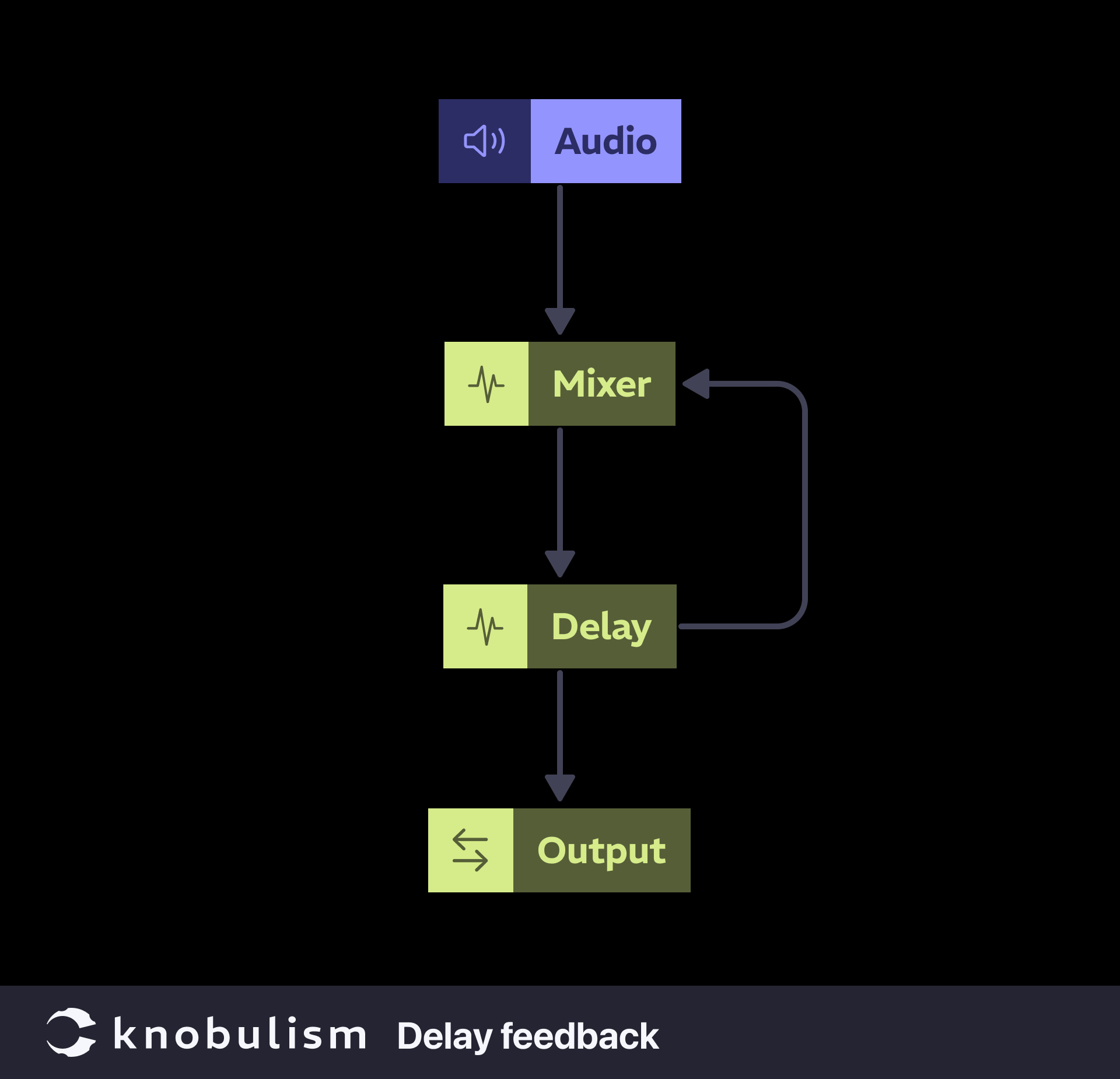
Next, introduce a simple melody of staccato notes to the input mixer. Inserting a low-pass filter between the delay’s output and the mixer will allow the feedback to be progressively filtered with each loop, simulating a sound similar to a Doppler effect. A LPF is a circuit commonly engineered into analog delays using BBD chips to reduce high-pitched clock noise.
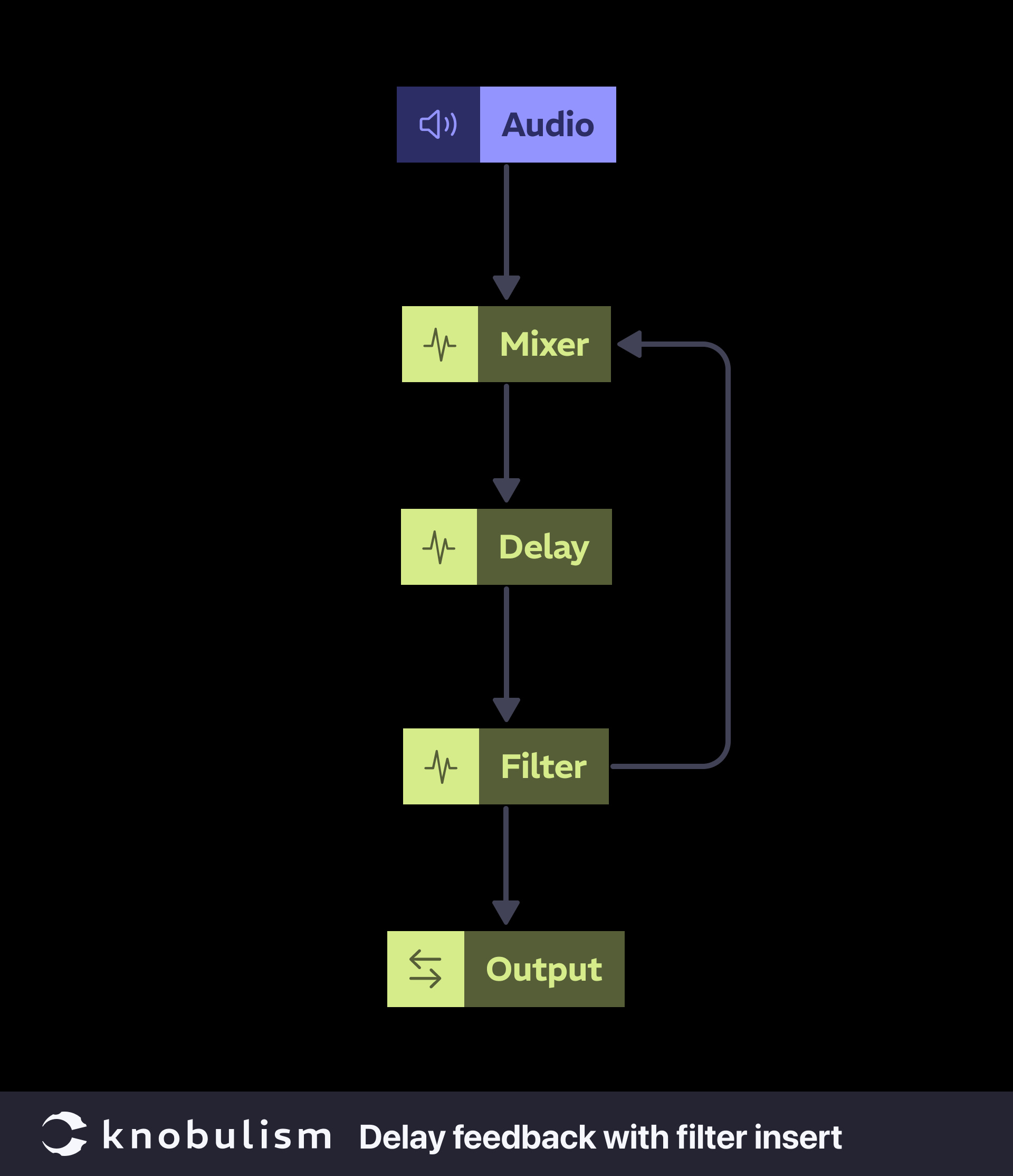
Feel free to integrate various modules into your feedback loop to discover a spectrum of sounds. Experimentation is key in finding new sonic possibilities. Try a distortion, wavefolder, reverb, ring modulation, frequency shifter or any modules combos that impart additional sound qualities to the source material.
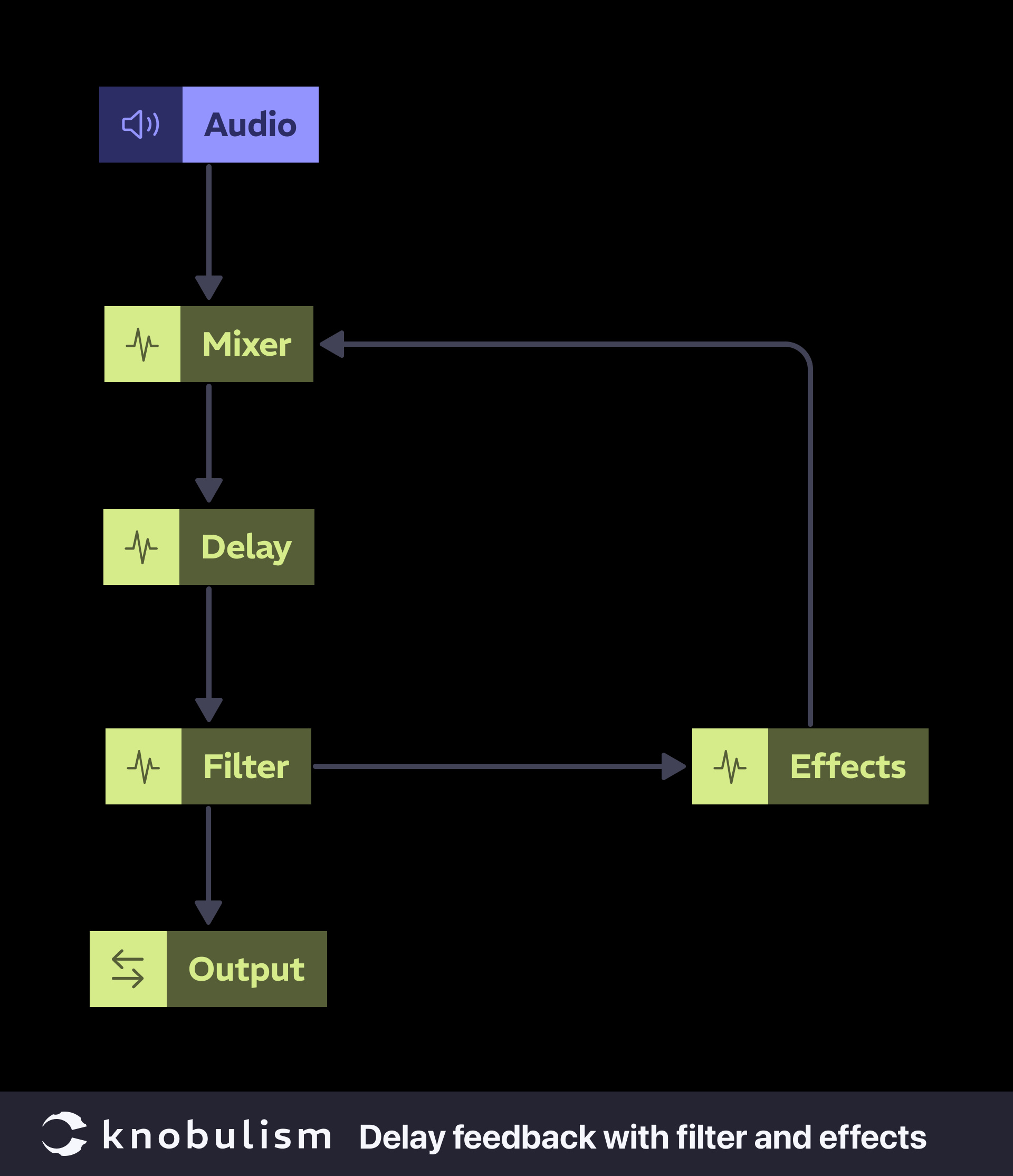
Advanced Applications
No Input Mixing in Modular Systems
Mixers are invaluable not just for conventional sound mixing but also as the foundation for feedback patches, commonly referred to as “no input mixing.” This approach involves using a mixer alone to generate sounds by creating feedback loops within it. Typically executed on console mixers with versatile controls like level, gain, and EQ, which can drastically alter the feedback’s sonic characteristics. In modular systems, mixers and VCAs often stand alone, without EQ or gain controls. Furthermore, VCAs and mixers are often designed to accept control voltage which are DC signals will only produce feedback in the sub-audio range. If CV feedback is what you’re after, yay, success! However if you want audible feedback I’ve already gone over how use a high pass filter set at roughly 20hz to remove DC from your signal, which should result in audio feedback.
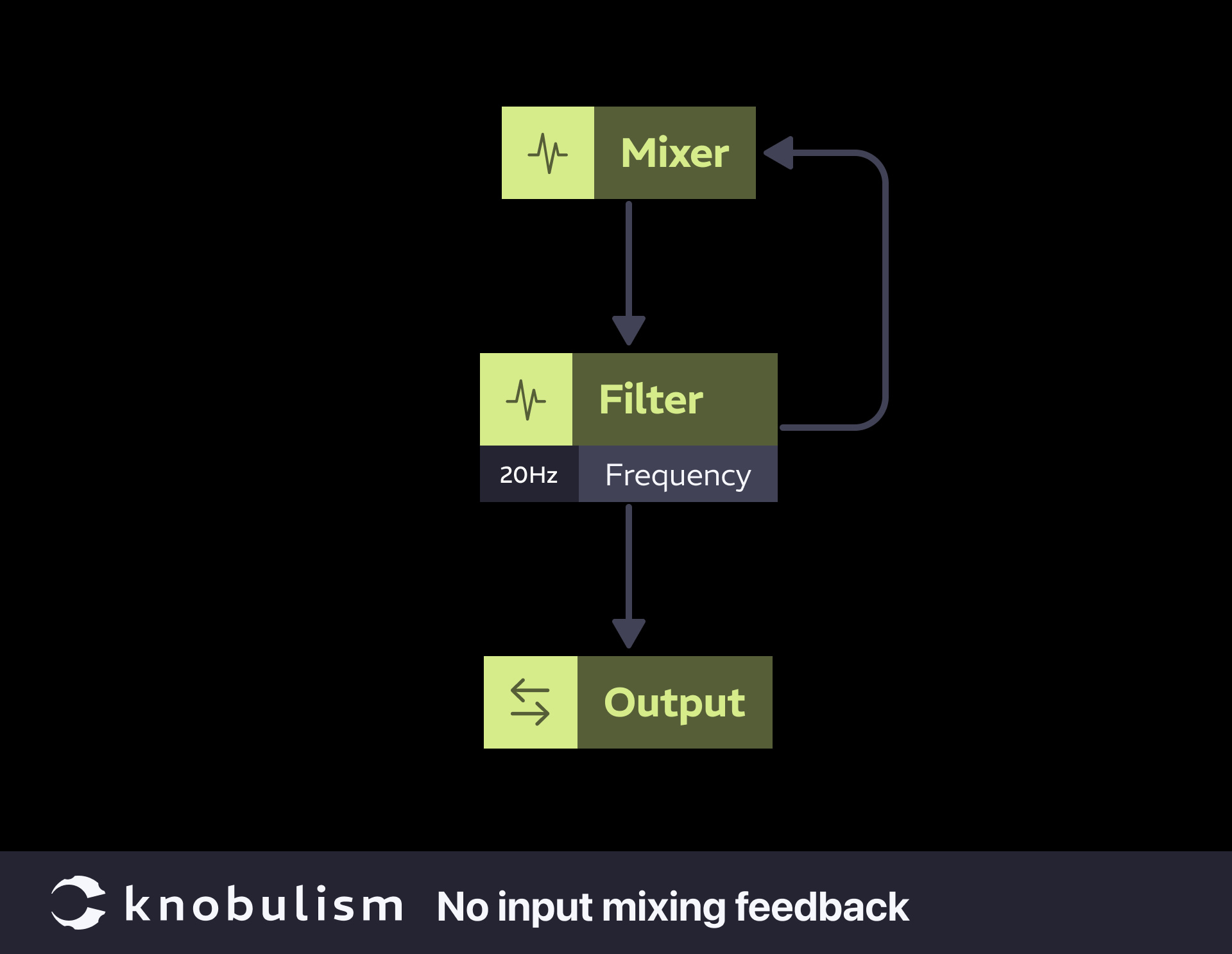
Expand the no-input mixing patch using similar techniques as the delay feedback patches.
Oscillator Self-Patching
This next technique involves using audio signals as CV to self-patch an oscillator. Begin by connecting one of the oscillator’s waveform outputs back into any of its various CV inputs. This method might unveil additional wave shapes not typically accessible through standard patching.
When Make Noise Strega was released I was obsessed with discovering its inner workings, which employs multiple feedback paths. During that process I discovered a feedback patch I really enjoyed. By routing an oscillator’s output through a delay and then feeding it back into the oscillator’s FM input, you can achieve unique, often tonal, frequency modulation effects. The audio returning the OSC is often the same pitch as what exits. It can create some interesting harmonies our even counterpoint to a source sequenced melody.
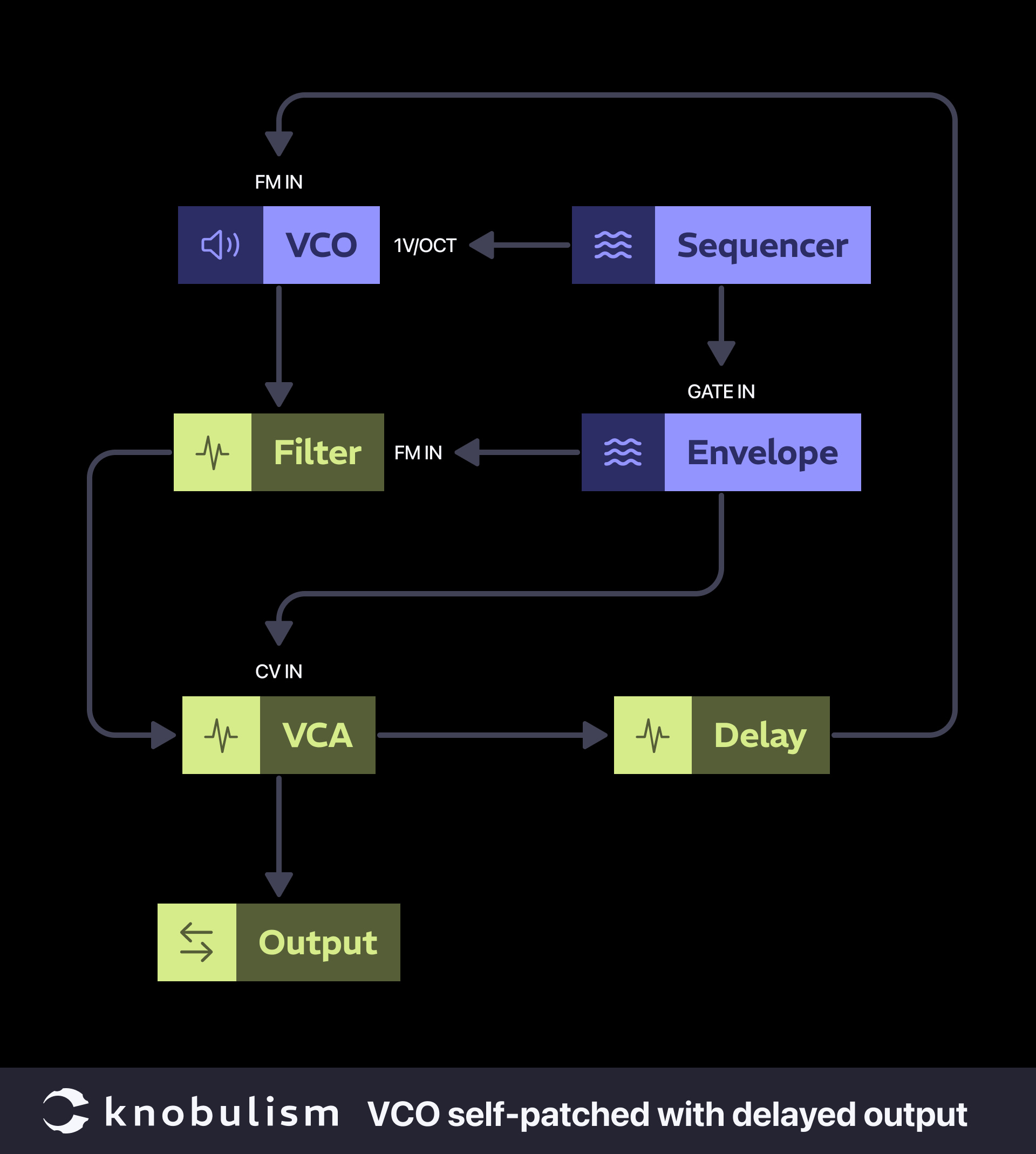
Noisy Feedback
While feedback is often perceived as mere noise or an unwanted disturbance, it can be artistically harnessed to produce compelling sounds. Start with two oscillators and cross patch their FM cv inputs. Plug an output from OSC A to the FM of OSC B and then the output from OSC B in the FM input of OSC A completing the feedback loop. Experiment with the FM attenuators and pitch of each OSC the reserved and more extreme settings going from tonal to pretty nasty. Building on this patch below is part of the core concept behind the Steady State Fate Metalloid. While Metalloid has more functions and is in a more hp friendly package this patch illustrates a bit of what is under the hood.

CV Feedback
For our final exploration, replace the oscillators in the previous setup with LFOs, each equipped with a frequency or rate CV input. This arrangement aims to generate more complex modulation sources, enhancing movement and reducing repetition, thereby increasing sonic interest. Begin by routing a sine or triangle wave from LFO A into the frequency or rate control of LFO B, and vice versa, to dynamically modulate each LFO’s rate based on the other’s output. This configuration can significantly alter your modulation signals, offering a fresh perspective on generative sound design.
Add a third LFO and try the full patch below. I often use the XAOC Batumi for this patch because it has four LFOs each with their own rate control, but even Make Noise Maths would work fine for this concept.

CV feedback is often the cornerstone of generative patching techniques, exemplified by setups like the Todd Barton Krell patch and the Benjolin, which merge audio and CV feedback strategies. For a deeper dive into these concepts, consider reading the article The Bones Behind Benjolin.
I hope this guide inspires you to experiment with feedback in your musical creations and discover new dimensions of sound. Your feedback (pun intended) and contributions are always welcome in the comments below!



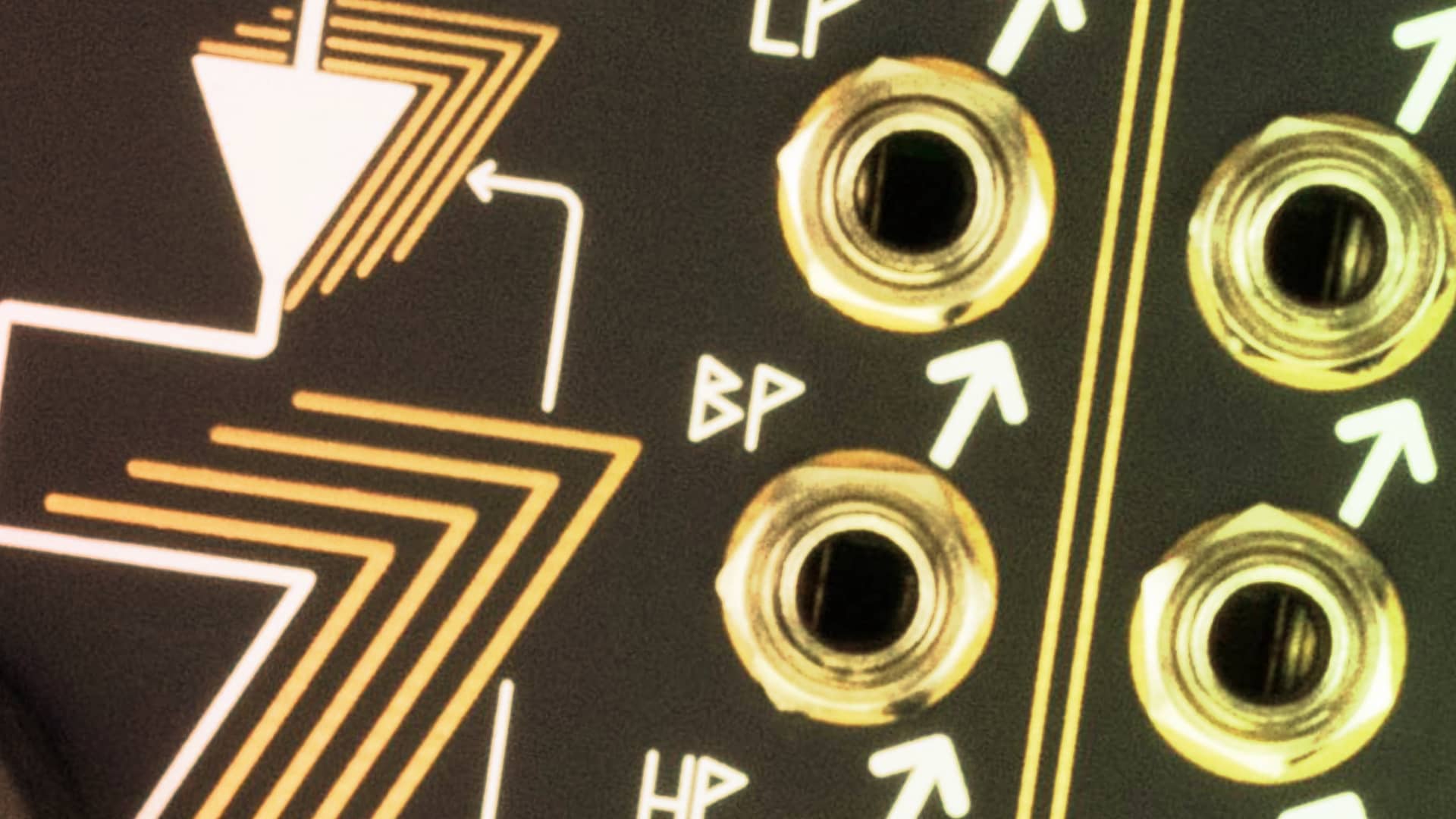
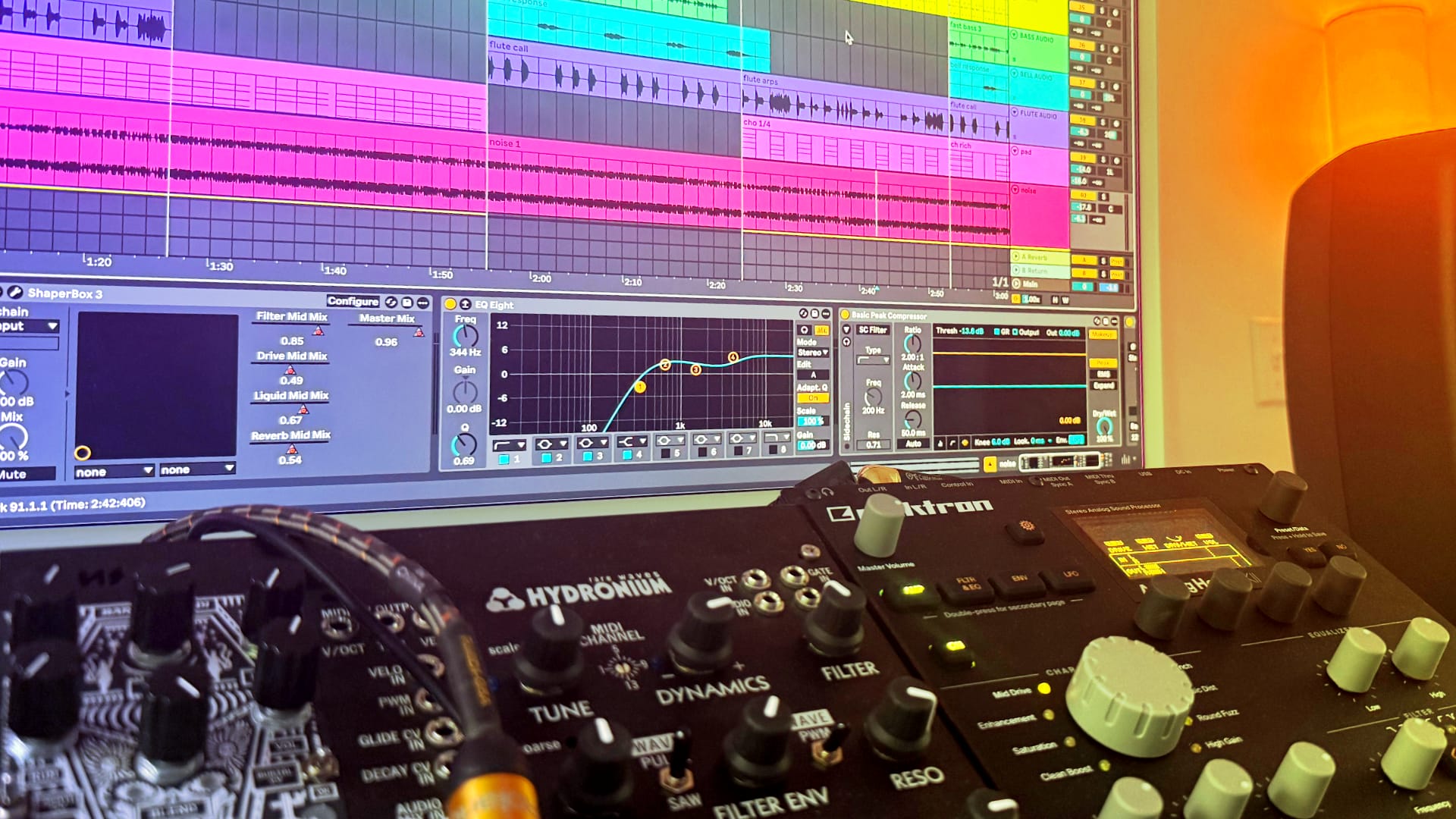
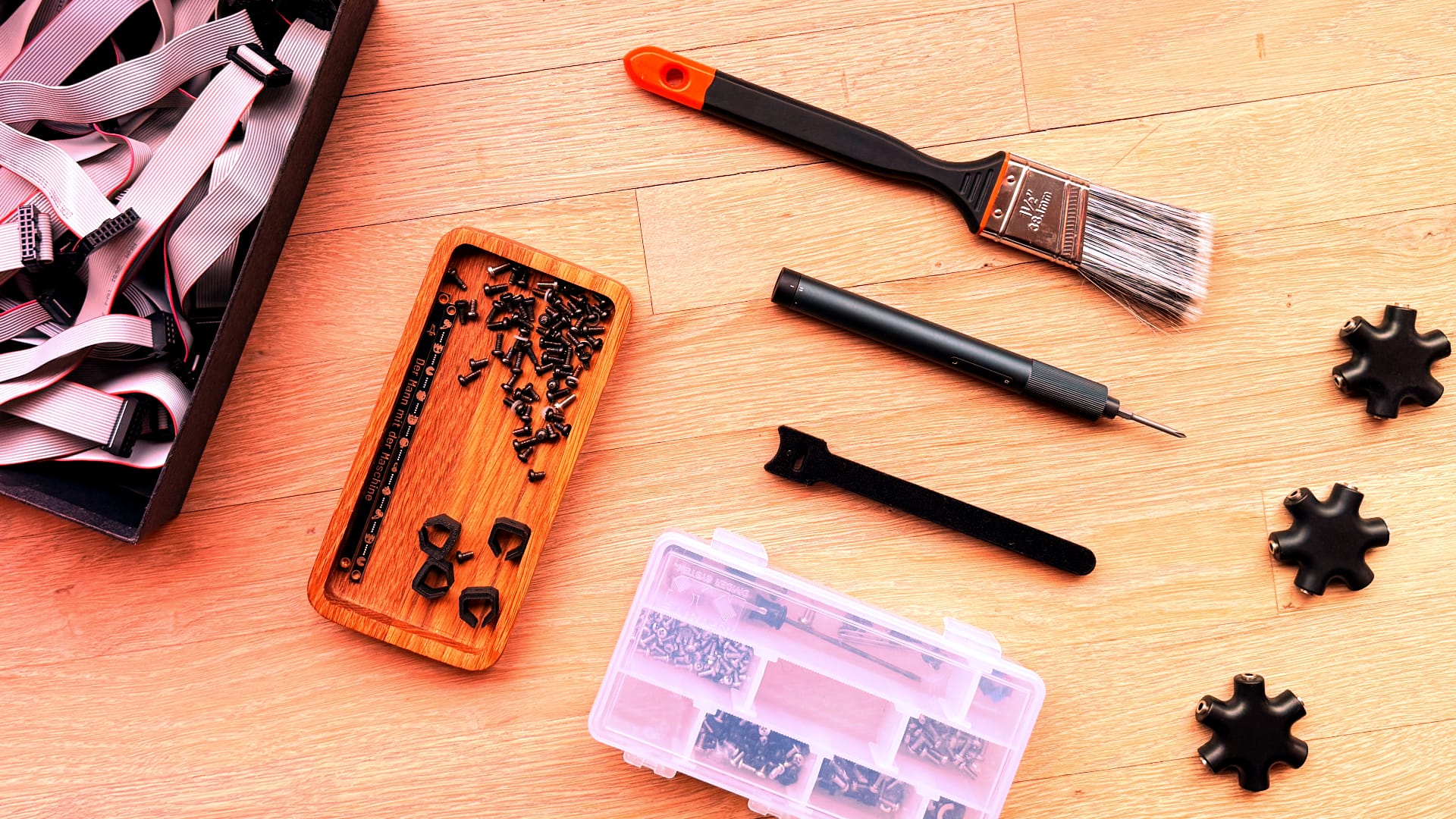



This website would have been so useful to me during my undergrad in music tech. I have finished now, but while i was studying I got head over heels into modular and got my hands on my own. I wanted to focus on it for assignments but I was also influenced by so many other things. This website would have given me ideas about research and practise in research. I will definitely use it from now. Please continue this.
Thanks for the positive feedback, it means a lot to me to know the work I am doing is helping folks out. Your encouragement is greatly appreciated.